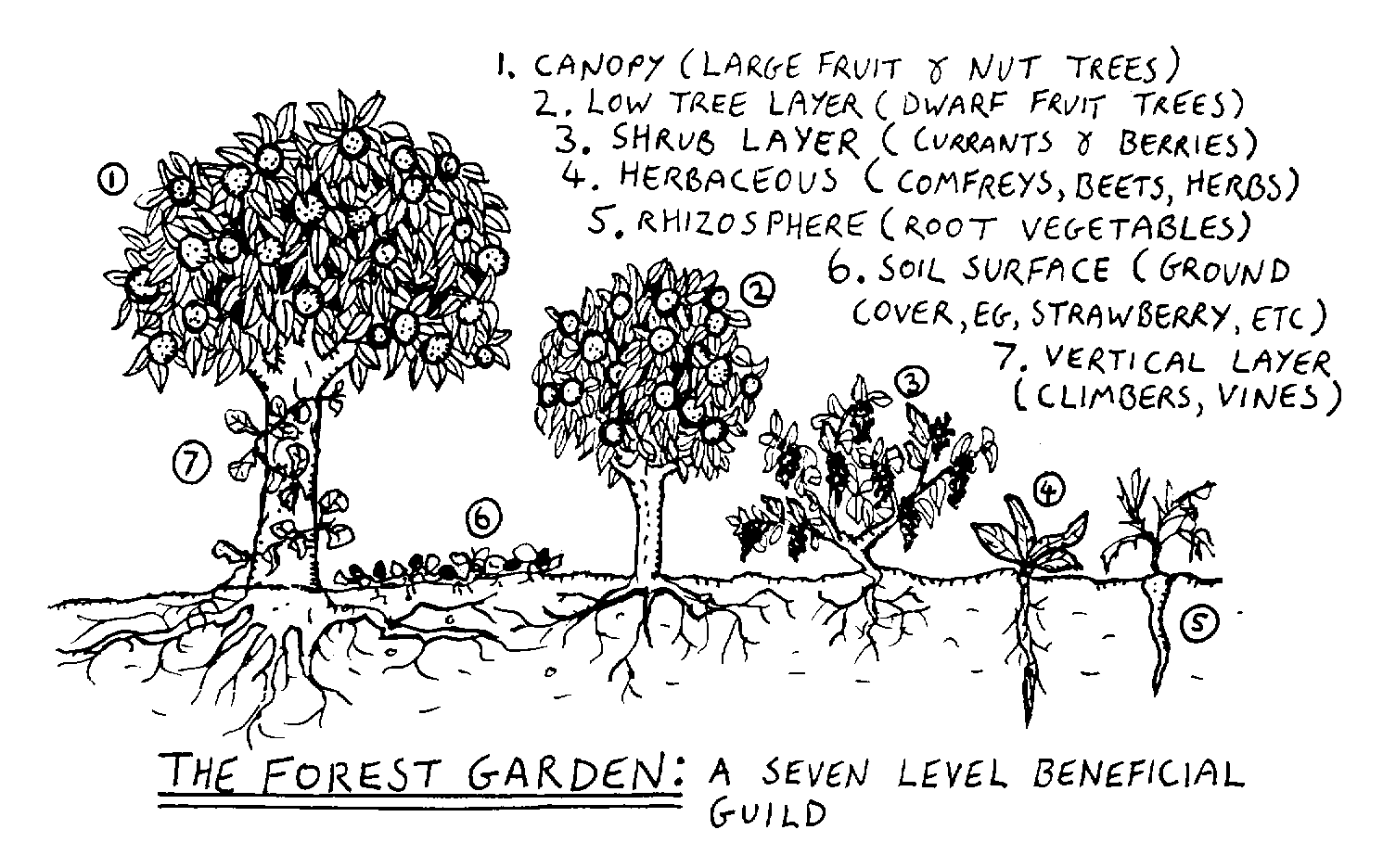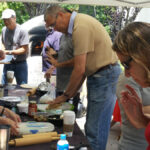Building a Food Forest garden – cover crops
 We’re designing a Food Forest garden, to be built later this spring. We’ll be tearing out asphalt, cleansing and rejeuvenating the soil, and recrafting the space as a community gathering area with a cob bread oven and food forest.
We’re designing a Food Forest garden, to be built later this spring. We’ll be tearing out asphalt, cleansing and rejeuvenating the soil, and recrafting the space as a community gathering area with a cob bread oven and food forest.
Today I’ve been studying cover crops and compost crops for the “rejeuvenating the soil” part. When we peel back all that asphalt, we will have soil which is tainted by the chemicals in the asphalt, and we should do some bioremediation to clean that up. (Bioremediation will be the subject of a different post.)
When we put in the fruit trees, I want to put beneath them some shorter plants which (1) boost soil fertility; (2) attract beneficial insects; (3) build soil life, although that is really 1+2 combined; (4) self-seed year-round; and (5) hopefully look attractive since this is a space that people will constantly be in and around.
Bountiful Gardens has been bountiful knowledge for me for years, so I started there. I took a look at the contents of their compost crop mixes. The object of either a cover crop or compost crop is to build healthy, alive, fertile soil. Ultimately, you’re trying to feed and build your panorama of soil organisms.
An aside about terminology: Bountiful seems to use the term “compost crop” to mean: intentionally planting and growing plants you will chop down and put into your compost pile. Most other sources use the term “cover crop” to mean anything from something you’re growing to till directly into the soil when it is partially grown, to something you intend to chop down and put in the compost pile. Some practitioners leave the roots in the soil; others till.
The next thing I considered was which of these plants we had already grown in the garden on the site: which plants were easy to grow, self-seeded, and “liked” our space. You can see my spreadsheet analysing all this.
My conclusion is that although we will need to add a few plants which are new-to-us, we already know how to grow a lot of things that will help build the soil, and several of them qualify for the 5-point goals above.


